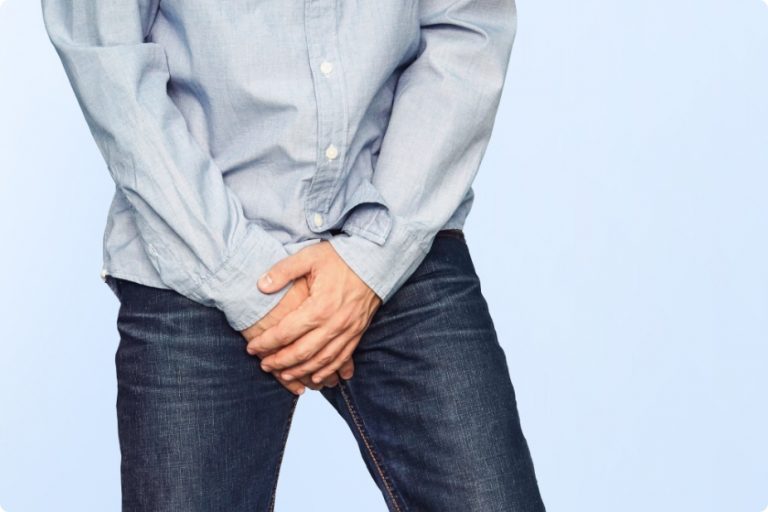Circumcision
Circumcision is the surgical removal of the foreskin (i.e. the skin covering the head of the penis). It may be carried out for religious or cultural reasons. It may also be considered a treatment option for conditions such as phimosis (i.e. the foreskin is too tight to be pulled back over the head of the penis) and paraphimosis (i.e. the foreskin cannot be returned to its original position after being pulled back).
There is not a medical standard of a “normal” length of the foreskin. Different factors need to be taken into account when considering whether to have circumcision. If in doubt, consult your healthcare provider.
Medical Benefits of Circumcision
Research suggests that circumcision may bring a number of health benefits:
- Prevention of penile problems, such as inflammation of the glans or foreskin, because of easier hygiene;
- Reduced risk of urinary tract infections;
- Reduced risk of sexually transmitted infections, including HIV;
- Reduced risk of penile cancer;
- Reduced risk of cervical cancer in the female sexual partners of circumcised men.
Types of Circumcision Surgery
There are three major types of circumcision in adults:
1. Conventional circumcision
In this procedure, the surgeon carries out the incision using surgical scissors, scalpels and other instruments. Electrocautery is used to control bleeding, and the wounds are closed by absorbable stitches. This method is safe and effective, but the procedure is relatively more painful, and takes longer to recover. Currently, more alternative methods have become available.

2. Laser circumcision
The foreskin is cut with a carbon dioxide laser, which cauterises small blood vessels with the surrounding tissue, reducing bleeding after the surgery. The wounds are closed by absorbable stitches. Compared with conventional circumcision, this method involves less bleeding and postoperative pain, and patients usually have a quicker recovery. The operative time is about 30 to 45 minutes.

3. Stapler circumcision
This method makes use of a specially designed stapling device (sometimes referred to as a “disposable circumcision suture device”) to perform the cutting and suturing procedures. Its advantages include a quicker procedure (about 10 to 15 minutes) and better postoperative appearance. It usually takes one to two weeks for the staples, which are used to close the wounds, to fall off.

Circumcision Costs
The majority of adults are suitable for undergoing circumcision with local anesthesia at a day procedure centre. Our centre offers a “circumcision package” priced at HKD $9,800 / $12,000 (depending on the attending doctor), which includes the following:
- First consultation fee
- Follow-up consultation fees (2 times)
- Surgery fees (stapler circumcision)
- Local anesthesia fees
- Operating theatre fees
- Surgical supplies fees
- Basic post-operative medication fees (one week)
- Wound care materials fees
- All other miscellaneous fees
If opting for laser circumcision or requiring surgery under general anesthesia at a hospital due to special circumstances, additional pricing will apply. Please contact us for more information.
After surgery, we provide blue light therapy for quicker healing and pain relief at an extra cost of HK$2,000, including four sessions. Complimentary staple removal service will also be offered.
Preparing for Circumcision
- Clean and shave the pubic area in advance (which helps reduce the risk of postoperative infection and inflammation);
- Avoid eating or drinking before the surgery;
- Bring a pair of tight fitting briefs to wear after the surgery.

Recovering after Circumcision
Circumcision is a simple and safe surgical procedure. Most people can return to normal activities within one or two days after the surgery. However, you should pay attention to the following:
- You may take a bath 24 hours after the surgery, but the incision site should be washed with water only.
- Pain from the operation may be relieved with pain relievers as prescribed by your doctor.
- Expect some bruising, oozing and slight bleeding from your incision. This is a normal part of the healing process, and will improve after a week.
- If you experience heavy bleeding, have a fever, or if the incision site is swollen or inflamed, contact your doctor as soon as possible.
- Men who undergo circumcision for phimosis, especially if the foreskin has never been pulled back, often feel more sensitive in the glans after the surgery. The body will gradually adapt to it.
- Erections at night and in the early morning during the healing process can be painful. Manage them with medicine prescribed by your doctor.
- Avoid sexual activity for at least one month after the surgery.
* All content in this website is for informational or educational purposes only. If in doubt, you should consult your doctor or other healthcare professionals.
